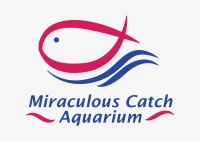

Product Details
The Furry Lobster is one of the most unique and exotic marine invertebrates available in the aquarium trade. Unlike true lobsters, the Furry Lobster belongs to the family Synaxidae, a small group of lobster-like crustaceans distinguished by their fuzzy, bristled appearance. These bristles give them a hairy look, which is both striking and unusual compared to other crustaceans.
Found in tropical and subtropical regions of the Indo-Pacific, the Furry Lobster is an excellent conversation piece for advanced aquarists with large marine aquariums. While hardy, they do have specific requirements regarding diet, tank mates, and space.
Key Features
-
Distinctive hairy or bristled body, giving a "furry" look.
-
Rare and exotic, not commonly seen in home aquariums.
-
Hardy once acclimated, with proper care and water quality.
-
Nocturnal and secretive, adding mystery to the aquarium.
-
Can live for several years in captivity with proper diet and care.
Appearance
-
Body covered in fine, hair-like bristles that resemble fur.
-
Typically brownish to purplish in color, helping them camouflage in rockwork.
-
Smaller than true lobsters—average size ranges from 4–8 inches.
-
Strong claws and legs used for scavenging and defense.
Water Conditions & Tank Setup
The Furry Lobster requires a large, stable, and well-structured saltwater tank:
-
Tank Size: Minimum 100 gallons.
-
Temperature: 72°F – 80°F (22°C – 27°C).
-
pH Level: 8.1 – 8.4.
-
Salinity: 1.022 – 1.025 specific gravity.
-
Filtration: Strong filtration and protein skimmer required.
-
Aquascaping: Provide rock caves, crevices, and hiding spaces. They are mostly nocturnal and spend much of the day hiding.
Behavior & Tank Mates
Furry Lobsters are generally peaceful scavengers, but caution is needed:
-
Best housed in fish-only or large community marine aquariums.
-
Compatible tank mates include:
-
Large Angelfish
-
Tangs
-
Groupers
-
Wrasses
-
-
Avoid housing with aggressive crustacean-eating species (Triggerfish, Puffers, large Eels).
-
Smaller fish, shrimp, and crabs may be at risk, especially at night.
Feeding Habits
These invertebrates are omnivorous scavengers, feeding on leftover food and detritus:
-
Will eat meaty marine foods such as shrimp, squid, clams, and fish.
-
Also consume algae and plant matter.
-
Supplemental feeding with sinking pellets or frozen seafood is recommended.
-
Best fed at night when they are most active.
Care & Maintenance
-
Hardy if provided with a proper diet and hiding places.
-
Require excellent water quality—ammonia and nitrite must always be at zero.
-
Sensitive to copper-based medications (avoid in treatment tanks).
-
Lifespan: 3–5 years, sometimes longer in captivity.
Why Choose the Furry Lobster?
The Furry Lobster is not just another crustacean—it’s an extraordinary, rare, and fascinating marine species that adds a touch of mystery and uniqueness to any large saltwater aquarium. With its unusual hairy appearance, nocturnal habits, and scavenging behavior, it’s sure to intrigue and impress aquarists and visitors alike.
Furry Lobster
Product Options
Furry Lobster
Delivery
Quantity
 Miraculous Catch Aquarium Buona Vista
Miraculous Catch Aquarium Buona Vista Aquarium Fishes, Tanks & Supplies From Miraculous Catch Aquarium Buona Vista


 SG
SG



